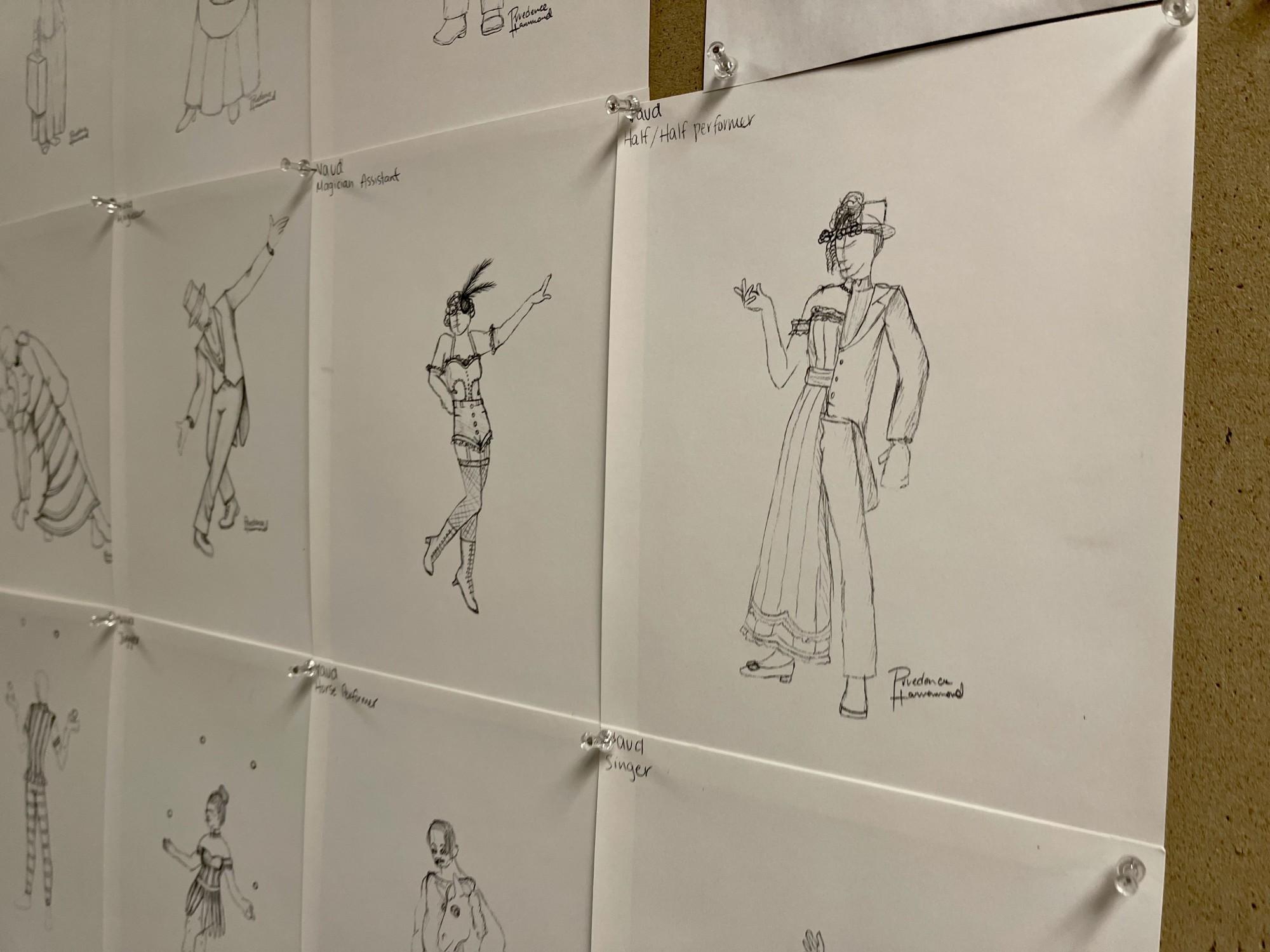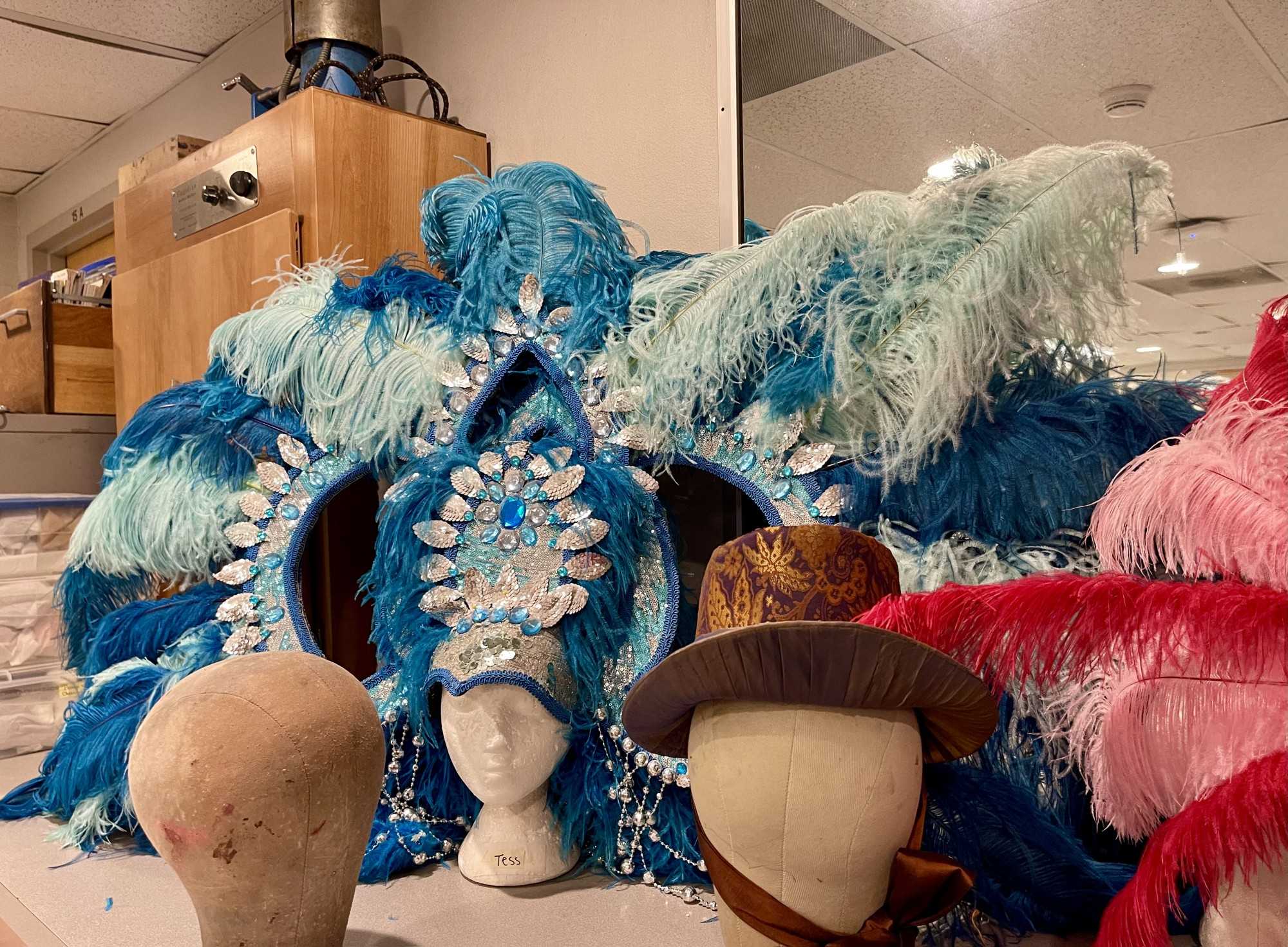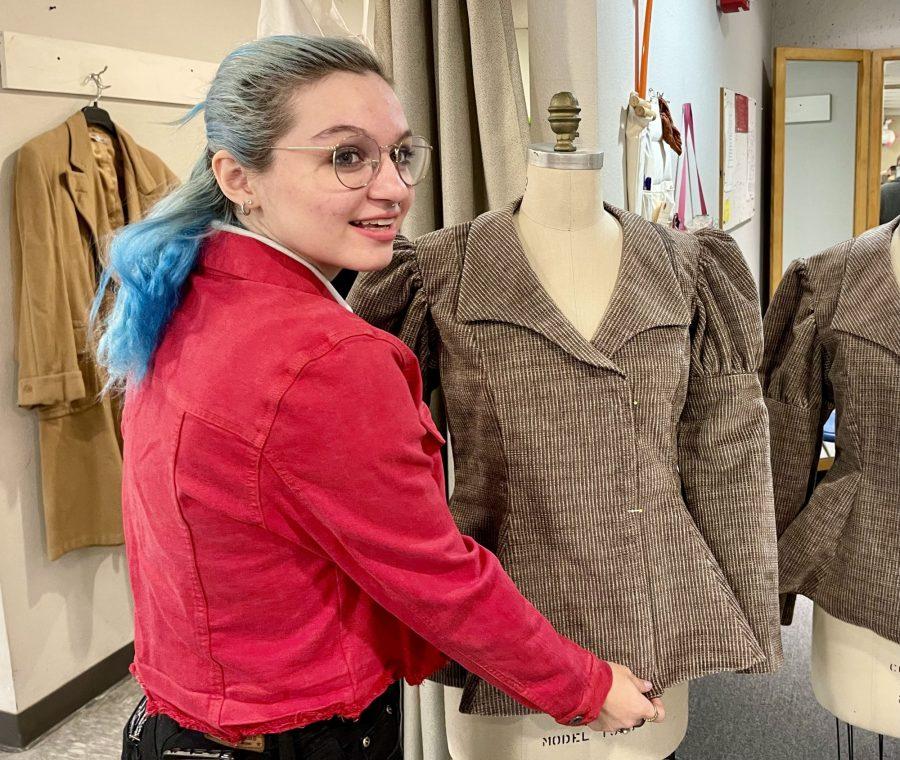The University of Arizona School of Theater, Film & Television’s costume vault is an underground maze of corsets, vests, fluffy skirts, ball gowns and trench coats.
Cubbies are labeled as specifically as “Men’s Corduroy Pants: Cool Colors” and huge plastic tubs, including one containing “Nightgowns — Women’s, 20th Century,” line the walls.
It’s also where Prue Hammond, a theater production junior at the UA, is creating new pieces for the theater department’s production of “Vaud,” an original work of the BA theater students and renowned director Wolfe Bowart.
Bowart was inspired by the UA’s American Vaudeville Museum Archive, which also inspired Hammond, the costume director. The archive, donated to the university by Frank Cullen and Donald McNeilly in 2008, has 4,321 items including postcards, sheet music, playbills and scripts. The online archive contains photos, stories and essays that explore how vaudeville shaped pop culture.
“Vaud” follows the story of an immigrant named Vaud, or Vee, arriving at Ellis Island and then becoming a vaudeville performer. The story goes through vaudeville’s boom years and “death” when movies took over in the early 20th century, according to Bowart.
The director also said it was important to the cast to bring vaudeville into the 21st century and pay respect to the countless immigrants that made American vaudeville what it was. The audience views the story from backstage, so they are quite literally seeing vaudeville from a new perspective.

“Vaudeville was a place where many different people from all over the world had a place to perform,” Bowart said.
The costume department was integral in portraying the many cultures on the stage, like the use of colorful folklorico skirts from Mexico.
“The students added a lot of their own culture into their acts,” Hammond said. “It was combining that element of vaudeville with their culture because it wasn’t really shown off in a nice way at that time. So it was turning that into appreciation.”
Lisitte Mora, one of the seven cast members who plays Vaud, said the students incorporate cultural loss and grief into the story, which is something many immigrants face when leaving their home behind.
Having multiple actors for Vaud was a major part of making the story universal, Bowart explained.
“She’s everybody,” Bowart said. “In that sense, the basic story is someone coming from far away and finding themselves in a magical world of theater.”
Costuming the main character was a unique task, as much of the play relies on music and mime to tell her story instead of dialogue.

Vaud’s jacket is worn by all seven cast members who play Vaud. It’s a muted, brown-gray color that stands out against the elaborate colors and patterns of the supporting cast, making it an easy identifier for the audience.
Costume makers were also tasked with re-creating the bizarre range of performances from the vaudeville era, such as a giant feathered bird head, a full horse costume, a stilt-walker and a three-legged man.
“Vaud” was created through a theater technique called devising, where actors do not start with an existing script. Instead, the actors and directors collaborate onstage to flesh out ideas. The resulting scenes are then put into a script towards the end of the process.
“It’s similar to the ‘yes … and’ technique with improv,” said Richard Tuckett, associate professor and costume director for the UA School of Theater, Film & Television.
Hammond said devising makes costuming a unique challenge.
“From a tech point of view, it’s very funky compared to the normal process,” Hammond said. “With the lack of script, they had to make their own characters, so a lot of my original designs were just based on random ideas. It was a lot of adjusting and adding little bits.”
Other elements are classic vaudeville, especially stripes, said Hammond. The audience will see lots of bright primary colors, heavy fabrics and busy patterns.
Bowart said the UA’s costume vault was one of the main reasons he wanted to write this piece, since it matches the extravagance of vaudeville.
“Anything goes during that period of theater. There was no through line. Anything you can imagine was onstage,” he said.
“Vaud” is on stage at the Tornabene Theatre, 1025 N. Olive Rd. on the UA campus, at 7:30 p.m. on Dec. 1-3 and at 1:30 p.m. Dec. 3-4.
Tickets are available at: theatre.arizona.edu/shows/vaud.
*El Inde Arizona is a news service of the University of Arizona School of Journalism.
Follow the Daily Wildcat on Twitter















